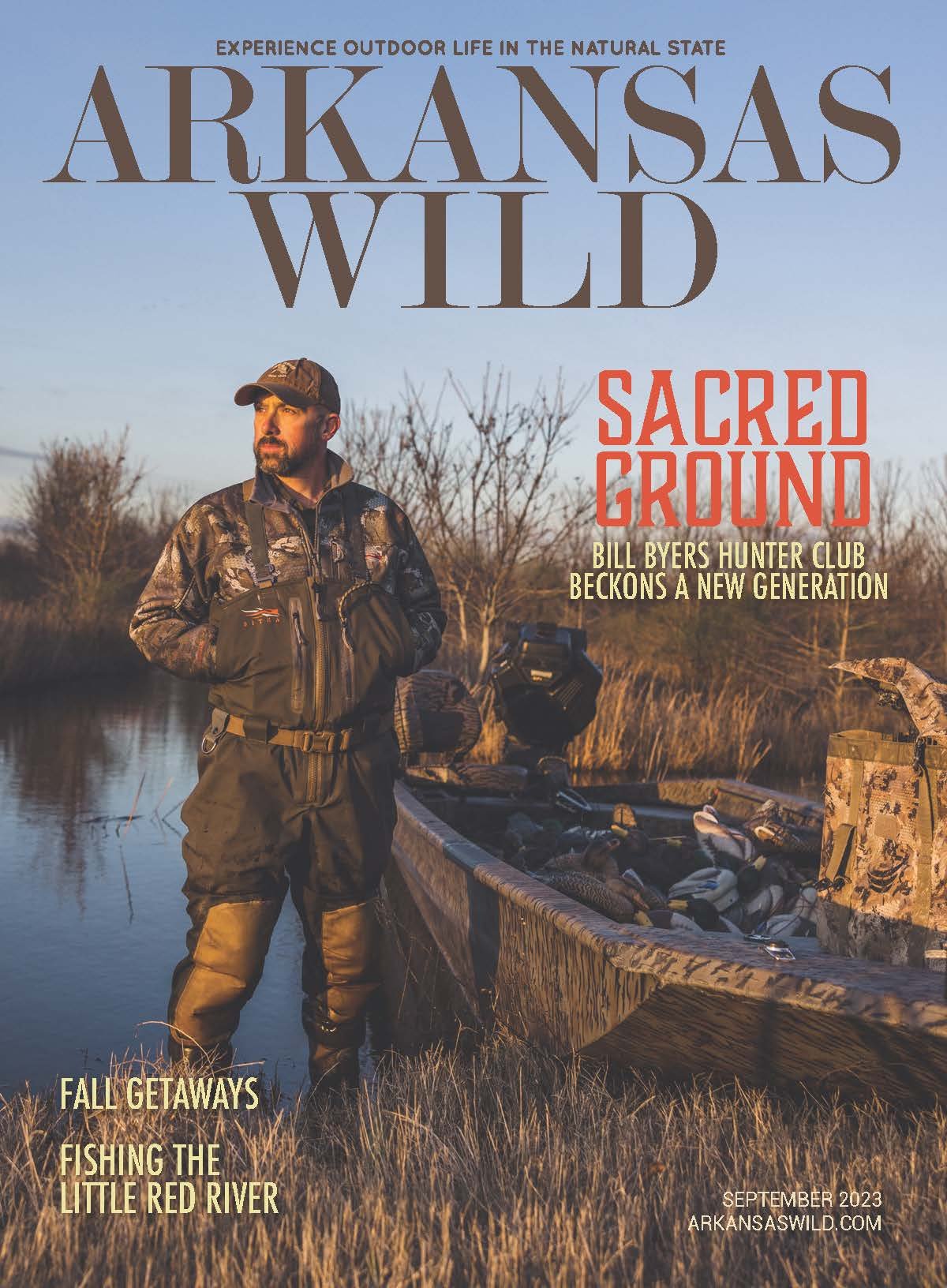It’s Not Easy Being Greentree
Greentree Reservoir renovation a key to habitat management
By Mark Carter
Game and Fish personnel inspect a greentree reservoir.
Greentree reservoirs (GTR), a staple of Arkansas duck hunting and an important component to the management of wildlife habitat in the state, are about to receive some much-needed attention.
The Arkansas Game & Fish Commission has launched the design phase of GTR renovation on 15 such sites, entailing almost 60,000 acres of public land. The main phase commences this summer with renovation to include replacing drainage pipes in streams and sloughs and adjusting out-of-place levees to increase the ability to drain and move water through these areas.
“Many GTRs have been in place 40 to 60 years and need some work,” said Luke Naylor, wildlife division chief with Game & Fish. “It’s an aging infrastructure. Most of it is old and undersized. That’s a big part of what we’re working on.”
Arkansas is home to 117 wildlife management areas, many of them populated by GTR, the flooded timber that impacts forest health and provides critical habitat for waterfowl traversing the Mississippi Flyway. These pockets of flooded timber serve as seasonal wetlands, flooded in fall and winter, which are integral to the Arkansas duck-hunting experience.
Game & Fish estimates 60 percent of the once-heavily forested alluvial plain that makes up most of East Arkansas has been lost since 1900 because of changes in land and water use. That equates to 5 million acres of bottomland hardwood forest.
Stands steadily degraded until individual landowners around Stuttgart began creating GTRs to increase flooding consistency in the wetlands and enhance hunting. And enhance it they did: By the 1950s, the state was adding GTRs to offset previous losses and improve habitat. This management system of flooding and drawing out water as needed helped restore forest health and wildlife habitat and, of course, created a duck-hunting mecca to boot.
The current renovation projects, such as can be found at White River National Wildlife Refuge, find Game & Fish officials working with Ducks Unlimited and the U.S. Fish & Wildlife Service to enhance existing GTRs and create new ones. Preliminary engineering work is underway and ultimately, new spillways, levees and water-control structures will be installed and existing ones improved.
The White River work will open new areas to hunting as well as provide new habitat and hold early shallow water for all the migrating birds that show up each season. In addition to the traditional waterfowl known to Arkansas hunters, the work will benefit migrating shorebirds, wading birds such as egrets and herons and native forest-breeding birds.
Tim Willis, DU conservation manager for the region that includes Arkansas, said the completed enhancement will impact about 1,700 acres, with future collaborations between DU and the state to follow.
PHOTOGRAPHY COURTESY OF: Arkansas Game and Fish Commission
Black Bear
Ducks aren’t the only species to benefit from GTR; black bears once roamed in abundance throughout the state’s bottomland hardwood forests where they denned in the cavities of large trees. At its peak, the bear population numbered 50,000 animals, a fact that gave Arkansas its former “Bear State” moniker.
Arkansas is home to about 5,000 bears these days, a fraction of the historical population but substantially better than in the 1930s, when the species was all but wiped out. A concerted effort has brought bears back from the brink; in 2018 hunters harvested 13 bears from the White River basin in Southeast Arkansas where GTRs are prevalent.



